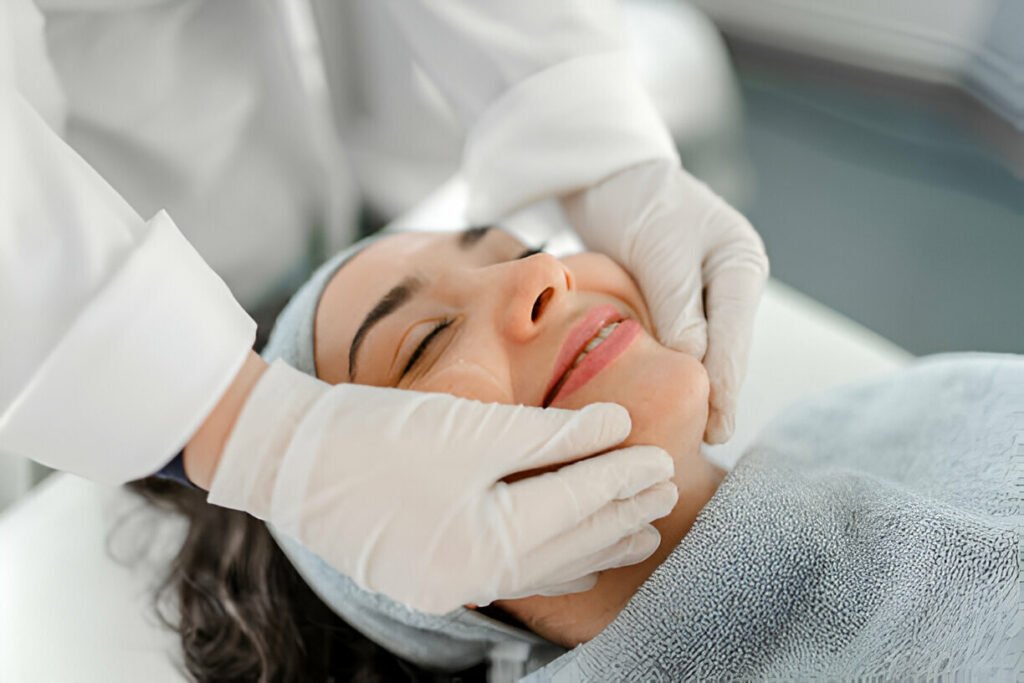Adolescence is a transformative time in life, not just emotionally and socially, but also physically especially for the skin. Many teenagers experience a sudden onset of skin concerns such as acne, oiliness, or dryness, driven by hormonal fluctuations.
As skincare gains popularity on social media platforms, one trend that continues to draw attention is the teen facial compilation videos showcasing various facial treatments performed on young skin. While these videos can be educational, they also underscore the importance of understanding proper skincare for teens.
This guide delves into the essential elements of teen skincare, what works, what doesn’t, and how to establish a routine that nurtures young, developing skin.
The Unique Challenges of Teen Skin
Teenage skin differs from adult skin in many ways, and recognizing those differences is the first step to proper care.
Hormonal Changes and Skin Impact
During puberty, the body produces increased levels of androgens hormones that stimulate the sebaceous glands to produce more sebum (oil). This can clog pores and lead to acne outbreaks, particularly on the face, back, and chest.
Increased Oil Production
The excess oil generated by active sebaceous glands contributes to a shiny complexion and a higher likelihood of blackheads, whiteheads, and pimples. While oil is essential for skin health, an imbalance can lead to breakouts.
Sensitive and Reactive Skin
Teen skin is often more reactive to external factors like stress, diet, and environmental pollution. This reactivity can exacerbate inflammation and delay healing, making it important to choose gentle, non-irritating skincare products.
Building a Basic Skincare Routine for Teens
A consistent skincare routine forms the foundation of healthy skin. It doesn’t need to be complex or expensive but should be suited to individual skin types and concerns.
Step 1: Cleansing
Start with a mild cleanser that effectively removes dirt, oil, and bacteria without stripping the skin’s natural moisture. Avoid products with harsh sulfates, which can irritate and dry out the skin.
Step 2: Moisturizing
Even oily or acne-prone skin needs hydration. Look for non-comedogenic moisturizers that contain soothing ingredients like aloe vera or hyaluronic acid. These help maintain skin barrier function and prevent dryness.
Step 3: Sun Protection
Daily sunscreen use is vital—even for teens. Choose a broad-spectrum SPF 30 or higher that is labeled “oil-free” or “for sensitive skin.” UV exposure can worsen acne scars and increase the risk of long-term skin damage.
Acne in Teens: Causes and Effective Treatments
Acne is the most common skin concern among teenagers. Although it is often temporary, it can have a lasting impact on self-esteem if not addressed properly.
Understanding the Root Causes
Teen acne is primarily caused by hormonal fluctuations, but genetics, diet, and stress also play roles. Overproduction of oil, clogged pores, bacteria, and inflammation contribute to the formation of acne lesions.
Effective Acne Treatment Options
-
Topical treatments: Benzoyl peroxide and salicylic acid are over-the-counter staples that help unclog pores and reduce bacteria. They are often included in dermatologist-recommended regimens.
-
Prescription medications: For moderate to severe acne, a dermatologist may prescribe topical retinoids or oral medications like antibiotics or hormonal therapies.
-
Lifestyle choices: Regular exercise, a balanced diet, and stress management can support skin health by reducing triggers that lead to acne.
When to See a Dermatologist
If acne becomes painful, persistent, or leads to scarring, it’s time to consult a dermatologist. Early intervention can prevent long-term damage and provide more effective results through tailored treatment plans.
The Rise of Teen Facial Videos: Educational or Entertaining?
Social media is filled with content like the teen facial compilation, where aestheticians perform extractions, masks, and massages on teenage clients. These videos can be mesmerizing, but they also raise questions about best practices in teen skincare.
The Benefits of Professional Facials
A professional facial can provide deep cleansing and exfoliation, which may help improve skin clarity. For teens dealing with persistent breakouts, this treatment—when performed by licensed professionals—can be both educational and therapeutic.
Risks to Watch For
Not all facials are suitable for teen skin. Aggressive treatments, unsterile tools, or strong chemical peels may do more harm than good. It’s essential to ensure that any aesthetic treatment is age-appropriate and approved by a qualified skincare professional.
Empowering Teens Through Education
Rather than relying solely on trending videos, teens should be encouraged to understand their skin and its unique needs. Educating young people about safe skincare practices helps build lifelong habits that contribute to overall health and well-being.
Natural and Holistic Approaches to Teen Skincare
In addition to conventional treatments, many teens are exploring holistic methods to complement their skincare efforts. These approaches focus on overall wellness and use gentle, natural ingredients.
Diet and Hydration
A diet rich in fruits, vegetables, whole grains, and lean proteins supports skin health from within. Drinking adequate water helps flush out toxins and keeps the skin hydrated and elastic.
Home Remedies and Natural Ingredients
Ingredients like honey, tea tree oil, and green tea have antibacterial and anti-inflammatory properties. When used correctly, they can complement a daily skincare routine—though teens should patch-test any new product to avoid allergic reactions.
Mind-Body Connection
Stress is a known trigger for breakouts. Activities such as yoga, meditation, and regular physical exercise help reduce cortisol levels, promoting clearer skin and a balanced mood.







